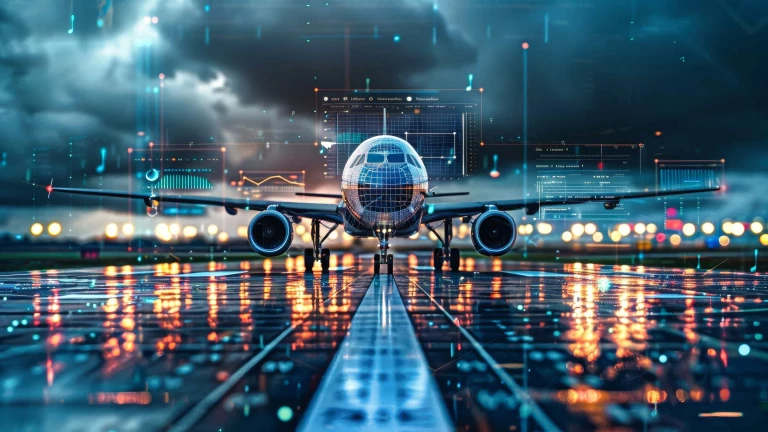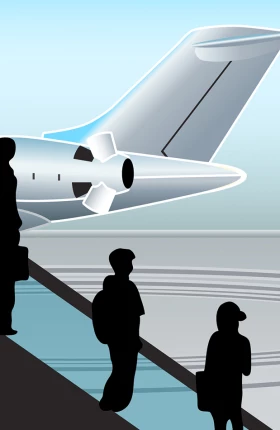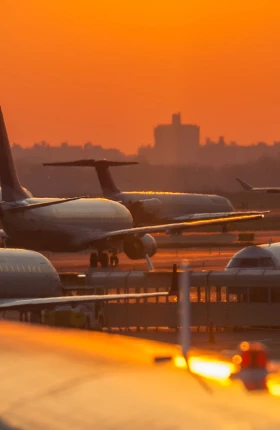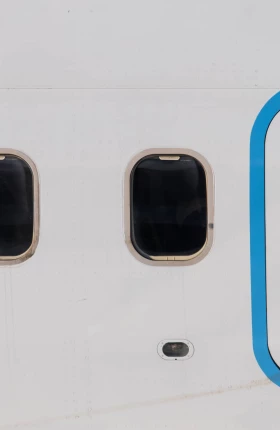Shifting customer expectations, rising cost pressures, and rapid technology advancements are forcing swift and far-reaching changes in the airline industry. To get a better handle on the evolving business landscape and the impact on operations, BCG has conducted its first Airlines Tech & Digital Benchmarking Survey.
We found that to build
innovation
and resilience while also sustaining profitability and operational efficiency, airlines will need to pursue four key technology imperatives: personalize the
customer experience
with AI to drive revenue, optimize operations to better manage costs, modernize IT and spur cloud adoption, and strengthen
cybersecurity
and
risk management.
These focus areas were once a pathway to competitive differentiation, but they’ve quickly become table stakes.
Driving Personalization and Revenue
After two years of strong fare premiums, airline ticket yields are now falling, with a drop of 5.6% in 2024 and a projected decline of 3.7% in 2025, according to IATA‘s Global Outlook for Air Transport 2024. At the same time, passenger revenue growth is slowing significantly—from 44.1% in 2022 to just 4.4% expected in 2025, according to SITA’s Air Transport IT Insights.
These figures signal an end to the pricing power airlines wielded after the peak of the COVID pandemic. As this advantage wanes and customers’ expectations change, traditional pricing models are becoming obsolete. In their place is an emerging menu of business intelligence and personalization tools enabling real-time, AI-driven pricing and individualized offers.
An emerging menu of business intelligence and personalization tools enabling real-time, AI-driven pricing and individualized offers is replacing traditional pricing models.
IATA found that 73% of airlines are investing in such tools, and that’s a good start. To make up for declining passenger ticket revenue, airlines will need to leverage these investments creatively to expand ancillary revenue streams. Examples of these revenue streams include:
- Loyalty Monetization. Airlines are increasingly selling frequent flyer miles to banks and retail partners as a revenue stream. Essentially, they are turning loyalty programs into a financial asset rather than just a customer perk.
- Bundled Offers. Airlines are shifting toward dynamic packaging, offering passengers a customized bundle of services based on their booking behavior, trip purpose, and past preferences. These services could include priority check-in, meal selection, and Wi-Fi.
- Trip-Based Personalization. While bundled offers focus on optimizing the flight experience itself, trip-based personalization extends beyond the flight by integrating partner services, including hotels, car rentals, and city tours.
Airlines that don’t expand into these ancillary revenue streams risk falling behind.
Subscribe to read our latest insights on Travel and Tourism.
Optimizing Operations and Managing Costs
The airline industry faces unrelenting cost pressure in a number of areas essential to the business:
- Labor. Wage increases of 15% to 40% across pilots, cabin crew, and maintenance technicians are adding significant cost burdens.
- Aging Fleets and Supply Chain Disruptions. Delays in new aircraft deliveries are leading to higher maintenance costs and fuel inefficiencies.
- Fuel. While jet fuel prices have dropped from $139 per barrel in 2022 to $99 per barrel in 2024, market volatility remains high.
We expect these cost pressures and volatility to persist. Managing them will require a shift away from traditional cost-cutting toward digital efficiency, automation, and proactive
cost management
such as predictive maintenance, materials planning, schedule coordination, crew planning optimization, and real-time disruption management. Examples of operational use cases include:
- Schedule-Optimization Tools. Support network planning through forecasting schedule robustness and downstream operational risk.
- Labor Planning and Scheduling. Create new models leveraging historical demand trends and behavioral inputs to ensure that labor supply (pilots, flight attendants, maintenance technicians, airport staff) aligns with demand, accounting for seasonality in schedules.
- Dispatch and Disruption Management. Optimize the deployment of assets and resources to maximize utilization and drive positive customer experiences.
Our survey found clear benefits to this more strategic approach to managing costs. Airlines that have fully embraced AI-driven operational strategies are already making significant financial gains—a BCG study found that EBIT growth increased by 2.4 times over a three-year period—highlighting a direct link between digital transformation and profitability.
Airlines that have fully embraced AI-driven operational strategies are already making significant financial gains, highlighting a direct link between digital transformation and profitability.
Modernizing IT and Spurring Cloud Adoption
Many airlines still must rely on aging IT structures that limit agility and scalability. Legacy passenger service systems, ERP, and maintenance systems make automation and digital integration difficult—and come with high operating expenses.
Leaders know they urgently need to accelerate IT modernization, and as they work toward this goal, cloud adoption and API integration are gaining momentum broadly across the industry. Our survey found that 68% of airlines’ compute and storage workloads are now on the cloud, while a few industry leaders reach almost 100%, enabling faster innovation cycles, real-time data analytics, and lower IT maintenance costs.
Those airlines that prioritize full-scale IT modernization will position themselves to launch new digital services, optimize costs, and enhance operational flexibility. Those that delay risk falling behind digital-first competitors.
Strengthening Cybersecurity and Risk Management
As airlines digitize, they are becoming more exposed to cyber threats. The regulatory environment is evolving too. SEC reporting requirements that went into effect in December 2023 mandate the reporting of material incidents within 72 hours, and oblige companies to include cyber risk management status and board composition in their annual reports. Cyber is now a board- and CEO-level topic.
To meet these demands, airlines need stronger security frameworks, and they need to embed real-time threat monitoring and mitigation tools into their operational IT infrastructure and cloud platforms. In other words, cybersecurity must evolve beyond mere compliance into a proactive, integrated risk management strategy. Our survey found that while 90% of airlines have implemented foundational security measures such as security monitoring, incidence response, and privacy governance, only 70% have adopted advanced protections such as third-party cyber risk management, business continuity and resilience, and automated data protection.
Future airline performance will depend on how well carriers integrate digital transformation into their core strategies. While airlines are mostly aware of the stakes, our Airlines Tech & Digital Benchmarking survey found that many are still in the early stages of devising and executing a strategy. Those that act now to embed digital-first, data-driven strategies into their operations and customer engagement will be able to define the future of air travel.










